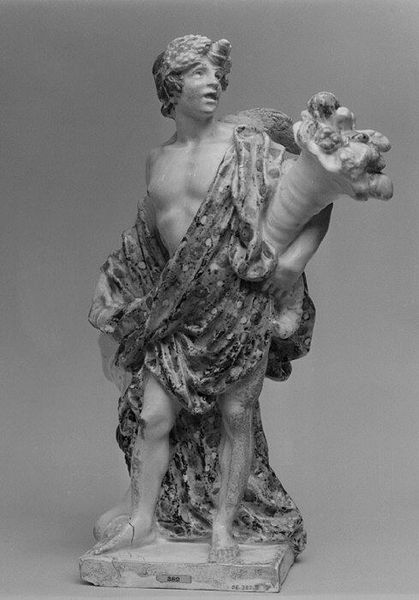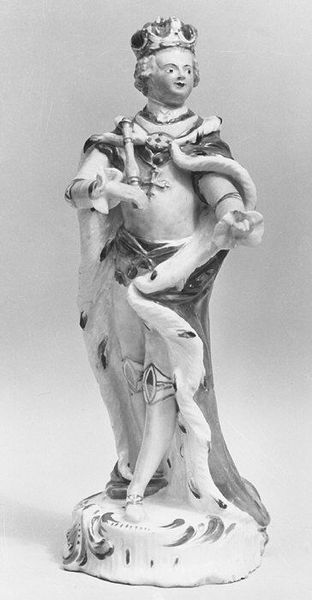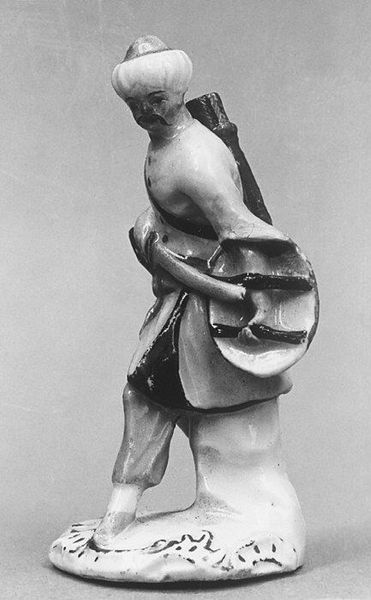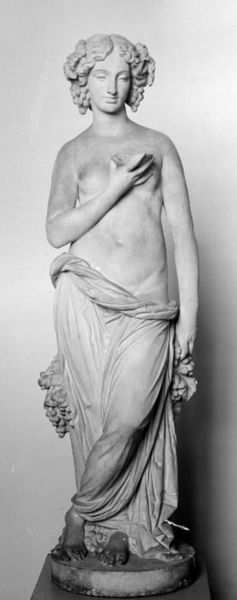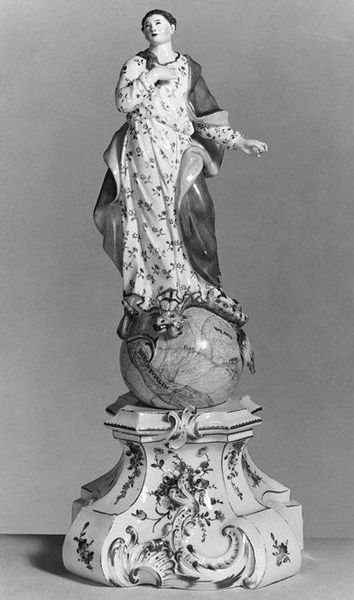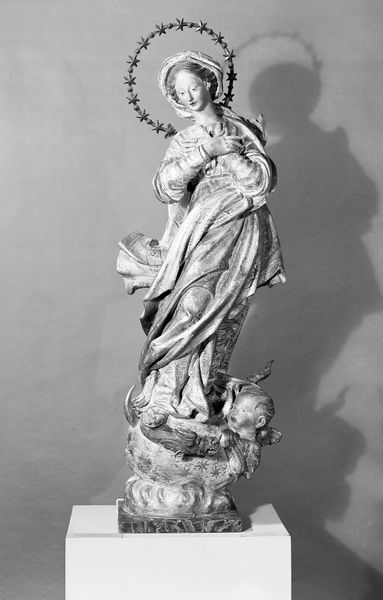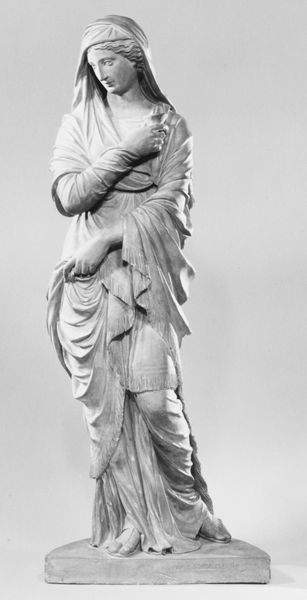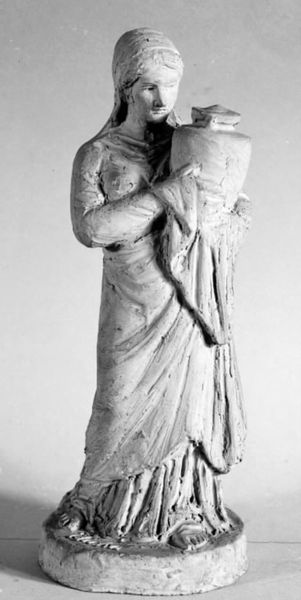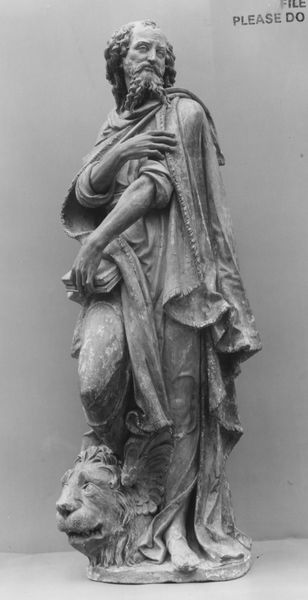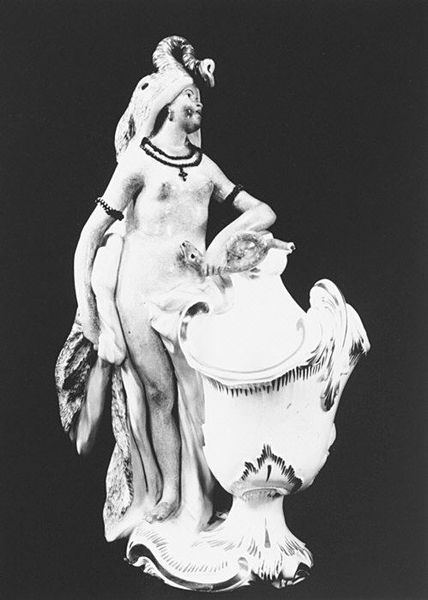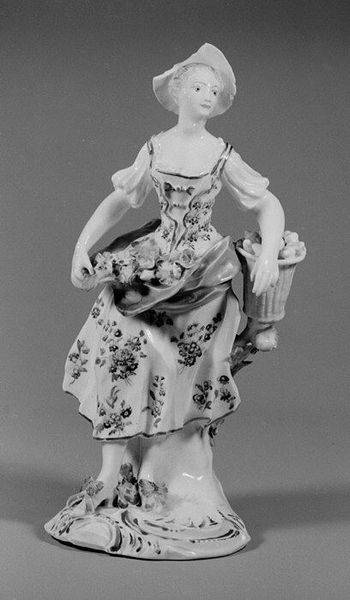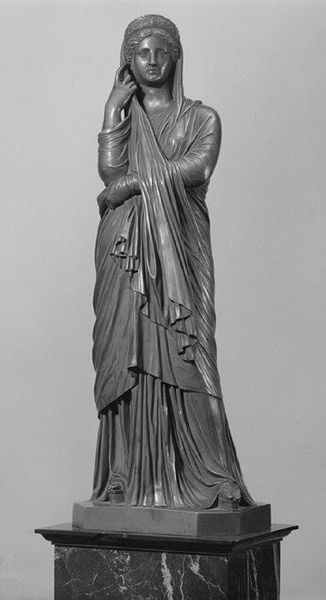
Dimensions: Height: 5 1/8 in. (13 cm)
Copyright: Public Domain
The Ludwigsburg Porcelain Manufactory crafted this porcelain figure of a street sweeper in the late 18th or early 19th century. It encapsulates the social dynamics of its time, blending the realities of labor with the aesthetic preferences of the elite. European porcelain factories emerged in the 18th century as symbols of national prestige and economic prowess. Royal patronage shaped their production and aristocratic consumers fueled the demand for luxury goods. Figures like this offer insight into the era’s complex social hierarchy. In ‘Street Sweeper,’ we see a romanticized depiction of a manual worker. The figure's graceful pose and elegant attire are at odds with the gritty reality of street sweeping, and the sculpture’s intended audience was part of the privileged class, who likely never engaged with such labor. To truly understand this artwork, one might explore the economic structures that supported the porcelain industry, the social stratification of 18th-century Europe, and the relationship between artistic representation and social reality. The meaning of art is always contingent on its social and institutional context.
Comments
No comments
Be the first to comment and join the conversation on the ultimate creative platform.
